Translations of real-verbal expressions into letters or symbols and vice versa.
Download as docx, pdf5 likes5,934 views
Giving translations of real-verbal expressions into letters or symbols and vice versa an explicit lesson Plan for the K-12 Curriculum
1 of 5
Downloaded 47 times
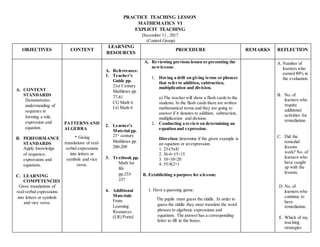




Ad
Recommended
Defining a variable in an algebraic expression and equation.



Defining a variable in an algebraic expression and equation.April Rose Anin This document outlines a practice teaching lesson plan on patterns and algebra that defines variables and expressions. The objectives are to demonstrate understanding of sequences in forming rules, expressions, and equations. The lesson plan includes reviewing previous concepts, establishing the purpose of defining variables, presenting sample problems, discussing new concepts through examples, independent practice identifying variables, finding applications, generalizing the definition of a variable, evaluating learning, and additional practice problems. The lesson concludes with reflections on its effectiveness.
CLASSROOM ORIENTATION 2023-2024.pptx



CLASSROOM ORIENTATION 2023-2024.pptxJaniceDacanay A helpful classroom orientation prior to class discussions. This will be the guide in disciplining and mentoring learners in secondary
Damath notes (2)



Damath notes (2)urih GAL This document describes a mathematical board game called DAMATH that was invented in the Philippines to teach mathematical concepts. It provides 12 games involving different math topics that can be played using the DAMATH board and game pieces. The document outlines the objectives of the game, provides the rules for setup and gameplay, and includes activity sheets for students that describe each of the 12 math-focused games. It aims to integrate math learning and social interaction through engaging gameplay.
People and Earth's Ecosystem Population Characteristics.pdf



People and Earth's Ecosystem Population Characteristics.pdfTrishaIgnacio4 This document discusses key population characteristics such as population density, natality, and mortality. It defines population density as the number of individuals per unit area or volume, and explains crude density and specific density. Natality is defined as the rate of reproduction or birth per unit time, and the document distinguishes between potential natality under ideal conditions and realized natality under existing environmental conditions. Formulas are provided for calculating population density based on total population size and land area.
Ellipse



Ellipseitutor An ellipse is a curve in a plane where the sum of the distances to two fixed points (foci) is a constant. The two foci, along with the major and minor axes and vertices, are used to define an ellipse. The standard equation of an ellipse depends on whether the foci lie along the x-axis or y-axis. Key properties including eccentricity and the latus rectum are also described.
Employee Benefits



Employee BenefitsDaniel Edward Ricio This chapter discusses employee benefits and their management. It covers the growth in benefits costs due to laws and taxes. Common benefit programs in the US include social insurance, private group insurance, retirement plans, and family-friendly policies. The chapter also examines strategies for controlling benefits costs, such as healthcare plans, wellness programs, and regulatory compliance. Effective communication with employees about benefits is also discussed.
MATH 6 PPT Q3 – Translation Of Real-Life Verbal Expressions And Equations Int...



MATH 6 PPT Q3 – Translation Of Real-Life Verbal Expressions And Equations Int...MercedesTungpalan This document discusses algebraic expressions and equations. It defines an algebraic expression as a mathematical phrase that uses variables, numerals, and operation symbols. It also explains how to translate real-life verbal expressions and equations into letters or symbols and vice versa by carefully reading context clues to determine the needed information. Finally, it emphasizes the importance of familiarity with words and phrases associated with symbols and operations for accurately translating between verbal and algebraic representations.
3 math lm q2



3 math lm q2EDITHA HONRADEZ This document is an instructional material for mathematics grade 3 published by the Department of Education of the Republic of the Philippines. It was collaboratively developed by educators and contains lessons on multiplication and division of whole numbers up to 3 digits long, including properties of multiplication and division. The material is freely available for public use but prior approval is needed for commercial exploitation.
7. solving two step word problems involving addition and subtraction of whole...



7. solving two step word problems involving addition and subtraction of whole...Annie Villamer This document provides examples and steps for solving two-step word problems involving addition and subtraction of whole numbers and money. It includes sample problems such as calculating the number of mangoes left after combining amounts picked and sold. The document also outlines George Polya's four-step approach to problem solving: understand the problem, make a plan, carry out the plan, and look back. Sample problems are then shown being solved using this approach.
Lesson Plan in Math 6 for Demo-Teaching [Division of Integers]![Lesson Plan in Math 6 for Demo-Teaching [Division of Integers]](https://cdn.slidesharecdn.com/ss_thumbnails/lessonplaninmathematics6divisionofintegers-190930130204-thumbnail.jpg?width=560&fit=bounds)
![Lesson Plan in Math 6 for Demo-Teaching [Division of Integers]](https://cdn.slidesharecdn.com/ss_thumbnails/lessonplaninmathematics6divisionofintegers-190930130204-thumbnail.jpg?width=560&fit=bounds)
![Lesson Plan in Math 6 for Demo-Teaching [Division of Integers]](https://cdn.slidesharecdn.com/ss_thumbnails/lessonplaninmathematics6divisionofintegers-190930130204-thumbnail.jpg?width=560&fit=bounds)
![Lesson Plan in Math 6 for Demo-Teaching [Division of Integers]](https://cdn.slidesharecdn.com/ss_thumbnails/lessonplaninmathematics6divisionofintegers-190930130204-thumbnail.jpg?width=560&fit=bounds)
Lesson Plan in Math 6 for Demo-Teaching [Division of Integers]Rigino Macunay Jr. This document contains a lesson plan for teaching division of integers in a Grade 6 mathematics class. The lesson plan outlines the objectives, content standards, learning competencies, teaching resources, values, strategies, procedures and assessment for the lesson. The procedures section describes the introductory activities, presentation of concepts, group activities to practice division of integers in different contexts, and a think-pair-share activity. The assessment includes exercises for students to demonstrate their understanding of dividing integers with the same and different signs.
Math 6 Grade 6 1st Quarter Lesson 1



Math 6 Grade 6 1st Quarter Lesson 1DepEd - San Carlos City (Pangasinan) This document provides a lesson plan for teaching 6th grade students how to add and subtract simple fractions and mixed numbers without regrouping. It includes objectives, instructions, examples, and practice problems. It aims to help students understand how to find the least common denominator of fractions, then add or subtract the numerators and write the answer over the common denominator or as a mixed number. Students are provided examples like adding 3/4 and 1/2, then given practice problems to solve on their own. The lesson plan is designed to help students master the key steps for adding and subtracting similar fractions.
Art 5 Grade 5 1st Quarter Lesson 1



Art 5 Grade 5 1st Quarter Lesson 1DepEd - San Carlos City (Pangasinan) Art 5 Grade 5 1st Quarter Lesson 1
Evaluating Algebraic Expressions - Math 7 Q2W4 LC1



Evaluating Algebraic Expressions - Math 7 Q2W4 LC1Carlo Luna This document provides instruction on evaluating algebraic expressions. It begins with an opening prayer related to mathematics. It then states the learning competency and objectives which are to evaluate expressions for given variable values and real-life expressions. Various math terms are defined such as constant, variable, term, and exponent. Examples of evaluating multi-step expressions are provided using the order of operations. The document also discusses substituting values for variables and performing operations. Real-life examples on costs are presented for students to evaluate. In closing, key ideas are summarized in notes on algebraic expressions, constants, variables, and the process of evaluating expressions.
Lesson guide gr. 3 chapter i -addition v1.0



Lesson guide gr. 3 chapter i -addition v1.0EDITHA HONRADEZ Here are the sums for the words in the evaluation:
1) CEBU
C = 11 425
E = 10 324
B = 21 354
U = 11 464
Total = 54 567
2) PASAY
P = 11 621
A = 1
S = 10 467
A = 1
Y = 11 521
Total = 33 611
3) TANAY
T = 10 467
A = 1
N = 21 565
A = 1
Y = 11 521
Total = 43 555
4) RIZAL
R = 10 434
I = 10 341
Z = 24 894
A = 1
Math action plan 2019



Math action plan 2019Jocelyn Tamares This document outlines an action plan for mathematics at Maruhat National High School for the 2019-2020 school year. The plan includes administering pre-tests, quarterly tests, and post-tests to assess student performance; using differentiated instruction techniques to increase performance; conducting drills to reduce the number of non-numerates; organizing a math club; holding a school-based math competition; training student participants for the division math competition; improving teacher competencies through professional development; restructuring the math room and math park; and preparing the plan with input from teachers, administrators, students and stakeholders. The expected outputs are increased student performance, reduced non-numerates, an organized math club, enhanced student skills, well-trained
Lesson guide gr. 3 chapter i -multiplication v1.0



Lesson guide gr. 3 chapter i -multiplication v1.0EDITHA HONRADEZ The document provides a lesson guide for teaching elementary school students about changing the order or regrouping in multiplication. It contains several learning objectives, content, experiences and activities to help students understand that changing the order of factors in a multiplication problem does not change the product. The activities include climbing a ladder game, grouping counters in different ways, examining rectangular arrangements, writing multiplication sentences for word problems, and evaluating understanding through completion and grouping exercises. The overall goal is for students to show that regrouping factors makes computation easier and does not affect the product.
K TO 12 GRADE 5 LEARNER’S MATERIAL IN MUSIC (Q1-Q4)



K TO 12 GRADE 5 LEARNER’S MATERIAL IN MUSIC (Q1-Q4)LiGhT ArOhL K to 12 Learning Module/Material in MUSIC for Grade 5 Quarter 1 to Quarter 4
Math 6 - Order of Operations GEMDAS.pptx



Math 6 - Order of Operations GEMDAS.pptxmenchreo The document provides learning targets and examples for applying the order of operations, known as GEMDAS (Grouping, Exponent, Multiplication, Division, Addition, Subtraction), to solve equations with multiple mathematical operations. It gives the steps to solve equations by first performing operations inside grouping symbols, then exponents, then multiplication/division from left to right, and finally addition/subtraction from left to right. Sample problems are worked through as examples.
CO1 Q2 MATH6- Week 6.pptx



CO1 Q2 MATH6- Week 6.pptxJosieMPadillo This document provides information and examples about interpreting the order of operations rule known as GEMDAS and performing multiple mathematical operations. It includes:
- An explanation of the GEMDAS rule - Grouping, Exponents, Multiplication, Division, Addition, Subtraction - and that it establishes the order that operations should be performed.
- Examples of solving expressions step-by-step according to the GEMDAS rule, including working through expressions with grouping symbols, exponents, multiplication, division, addition and subtraction.
- An example problem comparing two students, Irish and Lynard, who got different answers when solving the expression 2 + 4 x 3 - 6 ÷ 2, and identifying which student answered
Adding / subtracting dissimilar fractions



Adding / subtracting dissimilar fractionsWilson Parayaoan This lesson plan aims to teach students how to add and subtract dissimilar fractions. The lesson begins with a drill identifying similar and dissimilar fractions. Students will then review adding and subtracting similar fractions. To motivate students, a math video will be played. Next, the teacher will present and discuss how to add and subtract dissimilar fractions through worked examples and a word problem. Students will then practice adding and subtracting dissimilar fractions independently and solve word problems involving dissimilar fractions. Finally, students will be evaluated through additional fraction addition and subtraction questions, as well as word problems, and complete an agreement activity in their math workbook.
4A's Detailed Lesson Plan Grade 2



4A's Detailed Lesson Plan Grade 2janehbasto The document provides a detailed lesson plan for a 2nd grade mathematics class. The objectives are to teach dividing two-digit numbers by a one-digit number without remainder through examples and practice problems. The lesson includes reviewing concepts, working through word problems as a class, demonstrating the steps to solve problems, and having students complete group activities and a game to practice their skills. The goal is for students to understand and be able to apply the process of dividing multi-digit numbers.
(pt.1) Arts 6 Quarter 1 Module 1 - Logo Design and Cartoon Character Making.pptx



(pt.1) Arts 6 Quarter 1 Module 1 - Logo Design and Cartoon Character Making.pptxCrystelRuiz2 1. The document discusses the history of logo design and things to consider in logo making. It provides lessons on the history of logo design, elements to consider in logo design, and tools used in modern logo design.
2. The history of logos dates back to ancient family crests and hieroglyphs, with early modern logos emerging in the 1900s. Elements like color, shapes, fonts, proportions, and uniqueness are important to consider in logo design.
3. Modern logo design utilizes various tools and technology, as discussed in Lesson 3, allowing for creative expression while meeting the principles and elements of visual art.
3 health lm q3



3 health lm q3EDITHA HONRADEZ This document provides a learner's material on consumer health for third grade students in the Philippines. It was collaboratively developed by educators from various schools and reviewed by the Department of Education. The material encourages teachers and other stakeholders to provide feedback to help improve future editions. It includes 7 lessons to teach students about making healthy consumer choices, consumer rights and responsibilities, and finding reliable sources of health information.
32 teaching strategies in math 



32 teaching strategies in math Cordova Public College and University of Cebu-LapuLapu-Mandaue This document discusses several teaching strategies for math: Lecture-Discussion Method, Cooperative and Collaborative Learning, Jigsaw Method, and Think-Pair-Share. It provides details on how each strategy works, including applying the Lecture-Discussion Method with its nine events of instruction, the emphasis of cooperative/collaborative learning, and examples of applying the Jigsaw Method and Think-Pair-Share in a classroom.
Sample of-detailed-lesson-plan-grade-3 (1)



Sample of-detailed-lesson-plan-grade-3 (1)GodwinBabaran1 This document outlines a math lesson plan for teaching students to convert between units of time such as days, weeks, months, and years. The objectives are for students to understand and apply conversions of time measures and solve related problems. The lesson plan includes reviewing concepts, examples of conversions, group activities with word problems, and a formative assessment to evaluate learning. The reflection section considers students' mastery of the content and the effectiveness of the teaching strategies.
MATH 6 Q1 WK 9 D1-2-C.pptx



MATH 6 Q1 WK 9 D1-2-C.pptxMarkJamesSagaral2 The document discusses differentiating between terminating and non-terminating decimals when doing long division. It provides examples of dividing numbers and identifying the quotients as either terminating, where the division ends in zeros, or non-terminating/repeating, where digits repeat indefinitely. Students are engaged in an activity where they practice differentiating types of decimals. They are assessed by identifying more examples as terminating or non-terminating. The lesson reinforces that a repeating decimal is indicated with a bar over the repeating digits.
Differentiates expression from equation, Translate word phrase to numerical e...



Differentiates expression from equation, Translate word phrase to numerical e...April Rose Anin This document outlines a lesson plan on teaching mathematical expressions and equations to 6th grade students. The objectives are for students to differentiate between expressions and equations, translate word phrases to numerical expressions, and write simple equations. The lesson procedures include a review game, discussion of new concepts like expressions and equations, practice exercises, and a group activity to identify examples. Student understanding is evaluated through practice problems writing expressions and solving equations. The teacher reflects on teaching strategies and seeks help from the principal on any difficulties encountered.
Ad
More Related Content
What's hot (20)
MATH 6 PPT Q3 – Translation Of Real-Life Verbal Expressions And Equations Int...



MATH 6 PPT Q3 – Translation Of Real-Life Verbal Expressions And Equations Int...MercedesTungpalan This document discusses algebraic expressions and equations. It defines an algebraic expression as a mathematical phrase that uses variables, numerals, and operation symbols. It also explains how to translate real-life verbal expressions and equations into letters or symbols and vice versa by carefully reading context clues to determine the needed information. Finally, it emphasizes the importance of familiarity with words and phrases associated with symbols and operations for accurately translating between verbal and algebraic representations.
3 math lm q2



3 math lm q2EDITHA HONRADEZ This document is an instructional material for mathematics grade 3 published by the Department of Education of the Republic of the Philippines. It was collaboratively developed by educators and contains lessons on multiplication and division of whole numbers up to 3 digits long, including properties of multiplication and division. The material is freely available for public use but prior approval is needed for commercial exploitation.
7. solving two step word problems involving addition and subtraction of whole...



7. solving two step word problems involving addition and subtraction of whole...Annie Villamer This document provides examples and steps for solving two-step word problems involving addition and subtraction of whole numbers and money. It includes sample problems such as calculating the number of mangoes left after combining amounts picked and sold. The document also outlines George Polya's four-step approach to problem solving: understand the problem, make a plan, carry out the plan, and look back. Sample problems are then shown being solved using this approach.
Lesson Plan in Math 6 for Demo-Teaching [Division of Integers]![Lesson Plan in Math 6 for Demo-Teaching [Division of Integers]](https://cdn.slidesharecdn.com/ss_thumbnails/lessonplaninmathematics6divisionofintegers-190930130204-thumbnail.jpg?width=560&fit=bounds)
![Lesson Plan in Math 6 for Demo-Teaching [Division of Integers]](https://cdn.slidesharecdn.com/ss_thumbnails/lessonplaninmathematics6divisionofintegers-190930130204-thumbnail.jpg?width=560&fit=bounds)
![Lesson Plan in Math 6 for Demo-Teaching [Division of Integers]](https://cdn.slidesharecdn.com/ss_thumbnails/lessonplaninmathematics6divisionofintegers-190930130204-thumbnail.jpg?width=560&fit=bounds)
![Lesson Plan in Math 6 for Demo-Teaching [Division of Integers]](https://cdn.slidesharecdn.com/ss_thumbnails/lessonplaninmathematics6divisionofintegers-190930130204-thumbnail.jpg?width=560&fit=bounds)
Lesson Plan in Math 6 for Demo-Teaching [Division of Integers]Rigino Macunay Jr. This document contains a lesson plan for teaching division of integers in a Grade 6 mathematics class. The lesson plan outlines the objectives, content standards, learning competencies, teaching resources, values, strategies, procedures and assessment for the lesson. The procedures section describes the introductory activities, presentation of concepts, group activities to practice division of integers in different contexts, and a think-pair-share activity. The assessment includes exercises for students to demonstrate their understanding of dividing integers with the same and different signs.
Math 6 Grade 6 1st Quarter Lesson 1



Math 6 Grade 6 1st Quarter Lesson 1DepEd - San Carlos City (Pangasinan) This document provides a lesson plan for teaching 6th grade students how to add and subtract simple fractions and mixed numbers without regrouping. It includes objectives, instructions, examples, and practice problems. It aims to help students understand how to find the least common denominator of fractions, then add or subtract the numerators and write the answer over the common denominator or as a mixed number. Students are provided examples like adding 3/4 and 1/2, then given practice problems to solve on their own. The lesson plan is designed to help students master the key steps for adding and subtracting similar fractions.
Art 5 Grade 5 1st Quarter Lesson 1



Art 5 Grade 5 1st Quarter Lesson 1DepEd - San Carlos City (Pangasinan) Art 5 Grade 5 1st Quarter Lesson 1
Evaluating Algebraic Expressions - Math 7 Q2W4 LC1



Evaluating Algebraic Expressions - Math 7 Q2W4 LC1Carlo Luna This document provides instruction on evaluating algebraic expressions. It begins with an opening prayer related to mathematics. It then states the learning competency and objectives which are to evaluate expressions for given variable values and real-life expressions. Various math terms are defined such as constant, variable, term, and exponent. Examples of evaluating multi-step expressions are provided using the order of operations. The document also discusses substituting values for variables and performing operations. Real-life examples on costs are presented for students to evaluate. In closing, key ideas are summarized in notes on algebraic expressions, constants, variables, and the process of evaluating expressions.
Lesson guide gr. 3 chapter i -addition v1.0



Lesson guide gr. 3 chapter i -addition v1.0EDITHA HONRADEZ Here are the sums for the words in the evaluation:
1) CEBU
C = 11 425
E = 10 324
B = 21 354
U = 11 464
Total = 54 567
2) PASAY
P = 11 621
A = 1
S = 10 467
A = 1
Y = 11 521
Total = 33 611
3) TANAY
T = 10 467
A = 1
N = 21 565
A = 1
Y = 11 521
Total = 43 555
4) RIZAL
R = 10 434
I = 10 341
Z = 24 894
A = 1
Math action plan 2019



Math action plan 2019Jocelyn Tamares This document outlines an action plan for mathematics at Maruhat National High School for the 2019-2020 school year. The plan includes administering pre-tests, quarterly tests, and post-tests to assess student performance; using differentiated instruction techniques to increase performance; conducting drills to reduce the number of non-numerates; organizing a math club; holding a school-based math competition; training student participants for the division math competition; improving teacher competencies through professional development; restructuring the math room and math park; and preparing the plan with input from teachers, administrators, students and stakeholders. The expected outputs are increased student performance, reduced non-numerates, an organized math club, enhanced student skills, well-trained
Lesson guide gr. 3 chapter i -multiplication v1.0



Lesson guide gr. 3 chapter i -multiplication v1.0EDITHA HONRADEZ The document provides a lesson guide for teaching elementary school students about changing the order or regrouping in multiplication. It contains several learning objectives, content, experiences and activities to help students understand that changing the order of factors in a multiplication problem does not change the product. The activities include climbing a ladder game, grouping counters in different ways, examining rectangular arrangements, writing multiplication sentences for word problems, and evaluating understanding through completion and grouping exercises. The overall goal is for students to show that regrouping factors makes computation easier and does not affect the product.
K TO 12 GRADE 5 LEARNER’S MATERIAL IN MUSIC (Q1-Q4)



K TO 12 GRADE 5 LEARNER’S MATERIAL IN MUSIC (Q1-Q4)LiGhT ArOhL K to 12 Learning Module/Material in MUSIC for Grade 5 Quarter 1 to Quarter 4
Math 6 - Order of Operations GEMDAS.pptx



Math 6 - Order of Operations GEMDAS.pptxmenchreo The document provides learning targets and examples for applying the order of operations, known as GEMDAS (Grouping, Exponent, Multiplication, Division, Addition, Subtraction), to solve equations with multiple mathematical operations. It gives the steps to solve equations by first performing operations inside grouping symbols, then exponents, then multiplication/division from left to right, and finally addition/subtraction from left to right. Sample problems are worked through as examples.
CO1 Q2 MATH6- Week 6.pptx



CO1 Q2 MATH6- Week 6.pptxJosieMPadillo This document provides information and examples about interpreting the order of operations rule known as GEMDAS and performing multiple mathematical operations. It includes:
- An explanation of the GEMDAS rule - Grouping, Exponents, Multiplication, Division, Addition, Subtraction - and that it establishes the order that operations should be performed.
- Examples of solving expressions step-by-step according to the GEMDAS rule, including working through expressions with grouping symbols, exponents, multiplication, division, addition and subtraction.
- An example problem comparing two students, Irish and Lynard, who got different answers when solving the expression 2 + 4 x 3 - 6 ÷ 2, and identifying which student answered
Adding / subtracting dissimilar fractions



Adding / subtracting dissimilar fractionsWilson Parayaoan This lesson plan aims to teach students how to add and subtract dissimilar fractions. The lesson begins with a drill identifying similar and dissimilar fractions. Students will then review adding and subtracting similar fractions. To motivate students, a math video will be played. Next, the teacher will present and discuss how to add and subtract dissimilar fractions through worked examples and a word problem. Students will then practice adding and subtracting dissimilar fractions independently and solve word problems involving dissimilar fractions. Finally, students will be evaluated through additional fraction addition and subtraction questions, as well as word problems, and complete an agreement activity in their math workbook.
4A's Detailed Lesson Plan Grade 2



4A's Detailed Lesson Plan Grade 2janehbasto The document provides a detailed lesson plan for a 2nd grade mathematics class. The objectives are to teach dividing two-digit numbers by a one-digit number without remainder through examples and practice problems. The lesson includes reviewing concepts, working through word problems as a class, demonstrating the steps to solve problems, and having students complete group activities and a game to practice their skills. The goal is for students to understand and be able to apply the process of dividing multi-digit numbers.
(pt.1) Arts 6 Quarter 1 Module 1 - Logo Design and Cartoon Character Making.pptx



(pt.1) Arts 6 Quarter 1 Module 1 - Logo Design and Cartoon Character Making.pptxCrystelRuiz2 1. The document discusses the history of logo design and things to consider in logo making. It provides lessons on the history of logo design, elements to consider in logo design, and tools used in modern logo design.
2. The history of logos dates back to ancient family crests and hieroglyphs, with early modern logos emerging in the 1900s. Elements like color, shapes, fonts, proportions, and uniqueness are important to consider in logo design.
3. Modern logo design utilizes various tools and technology, as discussed in Lesson 3, allowing for creative expression while meeting the principles and elements of visual art.
3 health lm q3



3 health lm q3EDITHA HONRADEZ This document provides a learner's material on consumer health for third grade students in the Philippines. It was collaboratively developed by educators from various schools and reviewed by the Department of Education. The material encourages teachers and other stakeholders to provide feedback to help improve future editions. It includes 7 lessons to teach students about making healthy consumer choices, consumer rights and responsibilities, and finding reliable sources of health information.
32 teaching strategies in math 



32 teaching strategies in math Cordova Public College and University of Cebu-LapuLapu-Mandaue This document discusses several teaching strategies for math: Lecture-Discussion Method, Cooperative and Collaborative Learning, Jigsaw Method, and Think-Pair-Share. It provides details on how each strategy works, including applying the Lecture-Discussion Method with its nine events of instruction, the emphasis of cooperative/collaborative learning, and examples of applying the Jigsaw Method and Think-Pair-Share in a classroom.
Sample of-detailed-lesson-plan-grade-3 (1)



Sample of-detailed-lesson-plan-grade-3 (1)GodwinBabaran1 This document outlines a math lesson plan for teaching students to convert between units of time such as days, weeks, months, and years. The objectives are for students to understand and apply conversions of time measures and solve related problems. The lesson plan includes reviewing concepts, examples of conversions, group activities with word problems, and a formative assessment to evaluate learning. The reflection section considers students' mastery of the content and the effectiveness of the teaching strategies.
MATH 6 Q1 WK 9 D1-2-C.pptx



MATH 6 Q1 WK 9 D1-2-C.pptxMarkJamesSagaral2 The document discusses differentiating between terminating and non-terminating decimals when doing long division. It provides examples of dividing numbers and identifying the quotients as either terminating, where the division ends in zeros, or non-terminating/repeating, where digits repeat indefinitely. Students are engaged in an activity where they practice differentiating types of decimals. They are assessed by identifying more examples as terminating or non-terminating. The lesson reinforces that a repeating decimal is indicated with a bar over the repeating digits.
Similar to Translations of real-verbal expressions into letters or symbols and vice versa. (20)
Differentiates expression from equation, Translate word phrase to numerical e...



Differentiates expression from equation, Translate word phrase to numerical e...April Rose Anin This document outlines a lesson plan on teaching mathematical expressions and equations to 6th grade students. The objectives are for students to differentiate between expressions and equations, translate word phrases to numerical expressions, and write simple equations. The lesson procedures include a review game, discussion of new concepts like expressions and equations, practice exercises, and a group activity to identify examples. Student understanding is evaluated through practice problems writing expressions and solving equations. The teacher reflects on teaching strategies and seeks help from the principal on any difficulties encountered.
MATH 6 PPT Q3 W6 - Real-Life Verbal Expressions And Equations Into Letters Or...



MATH 6 PPT Q3 W6 - Real-Life Verbal Expressions And Equations Into Letters Or...LuisSalenga1 This document provides examples for teaching students how to translate phrases and sentences into algebraic expressions and equations. It includes sample phrases and sentences with the corresponding algebraic translations. Students practice translating phrases such as "twelve more than a number" to algebraic expressions like "12+x". The document also provides examples of evaluating algebraic expressions and translating expressions back to verbal phrases.
inbound6354522052973741292.pptx



inbound6354522052973741292.pptxJanethDairo This document provides information on instructional and learning strategies for mathematics. It discusses using concrete models, representations, and abstract concepts to teach mathematical skills and concepts (CRA instruction). It also recommends using mnemonics and graphic organizers as learning strategies to help students organize and retain mathematical information. The document provides examples of instructional strategies like direct instruction and computer-assisted instruction, as well as learning strategies like study skills and mnemonics. It emphasizes applying these strategies when teaching skills like problem solving, representing problems visually, and self-monitoring.
DLL in Math 7 Week 3.docx



DLL in Math 7 Week 3.docxzaldytabugoca3 The document is a daily lesson log from Osmeña National High School in the Philippines. It outlines the objectives, content, procedures, and activities for a 7th grade mathematics lesson on algebraic expressions. The lesson teaches students to translate between verbal phrases and mathematical expressions, identify constants and variables, and evaluate algebraic expressions. Example problems are provided to illustrate key concepts like exponents, addition/subtraction of terms, and substituting values into expressions. The formative assessment asks students to apply these skills by translating phrases, identifying constants/variables, and evaluating expressions with given values.
First grading mathematics vi



First grading mathematics viEDITHA HONRADEZ 1. The document provides learning materials for a mathematics lesson on evaluating expressions with two different operations involving exponents and parentheses.
2. Sample word problems and numerical expressions are given to help students practice evaluating expressions with operations like addition, subtraction, multiplication and division within parentheses and with exponents.
3. Students are asked to evaluate expressions, write their own problems, and identify key concepts like the meaning of exponents and bases in mathematical expressions.
DLL_MATHEMATICS 5_Q2_W8.docx



DLL_MATHEMATICS 5_Q2_W8.docxNiwregZoen The document provides a daily lesson log for a 5th grade mathematics class that focuses on ratios. Over the course of the week, students will:
1) Learn about ratios and how to express them using fractions, decimals, and proportions. Examples used include comparing numbers of circles to squares.
2) Practice skills like writing ratios in different forms using real objects and visual examples from daily life. Ratios compared may involve numbers of students, fruits, or classroom supplies.
3) Apply their understanding of ratios to solve word problems involving costs, quantities for sale, and family demographics to strengthen comprehension of ratios in practical scenarios. Assessment occurs through ratio identification, expression, and application exercises.
WEEK 8.docx



WEEK 8.docxManilynSuarez2 This document contains a daily lesson log for a 7th grade mathematics class. The lesson covers algebraic expressions, properties of real numbers, linear equations, and inequalities in one variable. The lesson objectives are to differentiate between equations and inequalities, illustrate linear equations and inequalities, and find solutions to linear equations and inequalities. The lesson content includes differentiating equations and inequalities, linear equations and inequalities in one variable, and solving linear equations and inequalities. Learning resources and procedures are outlined for reviewing concepts, examples, practice, and application. Formative assessments are used to check student understanding.
Unit 6 presentation base ten equality form of a number with trainer notes 7.9.08



Unit 6 presentation base ten equality form of a number with trainer notes 7.9.08jcsmathfoundations The document discusses concepts related to base ten, equality, and forms of numbers. It defines these concepts, examines how students develop an understanding through research on cognitive development, and provides classroom applications and strategies for teaching these concepts effectively. Diagnostic questions are presented to assess student understanding, and examples show how to respond to common student errors or misconceptions in working with numbers.
7 math lm mod3



7 math lm mod3Mirasol Ralo This document provides an introduction to algebra concepts such as constants, variables, algebraic expressions, and notation. It explains that letters like x, y, and n represent unknown values called variables, while numbers on their own are constants. Algebraic expressions group terms containing variables and constants using addition and subtraction. The equal sign indicates equivalence between expressions. The document uses examples to demonstrate evaluating expressions when values are given for variables.
Dll wk-1-lc-1



Dll wk-1-lc-1JennyRoseSumagui2 1. The document is a daily lesson log for a Grade 9 mathematics class covering quadratic equations.
2. It outlines the objectives, content, learning resources and procedures used to teach illustrations of quadratic equations, solving by extracting square roots, and solving by factoring.
3. Examples are provided to demonstrate solving quadratic equations by extracting square roots and factoring. Students will practice solving equations using these methods.
Dll wk-1-lc-1



Dll wk-1-lc-1JennyRoseSumagui2 1. The document is a daily lesson log for a Grade 9 mathematics class covering quadratic equations.
2. It outlines the objectives, content, learning resources and procedures used to teach illustrations of quadratic equations, solving by extracting square roots, and solving by factoring.
3. Examples are provided to demonstrate solving quadratic equations by extracting square roots and factoring. Students will practice solving equations using these methods.
Finite Geometric Series dlp



Finite Geometric Series dlpRichard Paulino This document outlines a lesson plan for teaching students about finding the sum of terms in finite geometric sequences. It includes objectives, content discussion, example problems and solutions, supplementary activities, and assessment questions. The lesson begins with a review game to identify finite vs infinite sequences. Students then learn the formula to calculate the sum and practice with example sequences. Additional individual and group activities reinforce the concept, and real-world applications are provided. The plan concludes with a reflection on student learning outcomes and areas for improvement.
Algebraic Expression Maths Lesson Plan in detail



Algebraic Expression Maths Lesson Plan in detailManik Bhola Steps:
⇒ General Aids
⇒ Specific Aids
⇒ General Objectives
⇒ Entry Behavior Assumed
⇒ Expected Behavior Outcomes
⇒ Entry Behavior Testing
⇒ Announcement of the topic
⇒ Presentation
⇒ Understanding Level Testing
⇒ Real learning Outcomes
⇒ Homework
G6 m4-a-lesson 1-t



G6 m4-a-lesson 1-tmlabuski This lesson introduces students to the relationship between addition and subtraction using tape diagrams and algebraic expressions. Students represent addition and subtraction expressions using tape diagrams with squares and explore how adding and then subtracting the same number results in the original amount. They realize this is true regardless of the specific numbers used. Students then write number sentences with variables to represent these identities, like w + x - x = w. The lesson aims to build students' understanding that identities will be true for any numbers substituted into the variables.
co (addition of polynomials).docx



co (addition of polynomials).docxNelynDegala The lesson plan summarizes adding integers using color counters and real-world examples. It outlines the objectives, content, learning resources, procedures and activities for the lesson. The teacher will review integers, demonstrate adding integers using color counters, and discuss real-life applications. Students will participate in group activities practicing adding integers, including representing expressions with color counters and developing examples and slogans about adding polynomials. Connections will be made across subjects such as science, technology, economics and health protocols.
DLL Math Grade7 Quarter2 Week5 (Palawan Division).docx



DLL Math Grade7 Quarter2 Week5 (Palawan Division).docxTom Quilloy This document is a daily lesson log for a 7th grade mathematics class. It outlines the objectives, content, learning resources, procedures, and reflection for lessons on multiplying and dividing polynomials over the course of a week. The objectives are for students to multiply monomials using laws of exponents, multiply polynomials using the distributive property and FOIL method, and divide polynomials by monomials and binomials. The content covers patterns and algebra, including algebraic expressions/equations. Learning resources listed include textbooks and materials. The procedures provide examples and practice problems for students to multiply and divide polynomials. The reflection section evaluates student learning and identifies strategies for remediation.
(8) Lesson 2.5 - Solve Multi-Step Equations



(8) Lesson 2.5 - Solve Multi-Step Equationswzuri This document provides instruction on solving various types of linear equations, including single-variable, multi-step, and word problems. It begins with examples of solving single-variable equations by isolating the variable. It then discusses using properties of equality like distribution and combining like terms to solve more complex multi-step equations. The document notes that equations can have one solution, infinitely many solutions (an identity), or no solution depending on whether the resulting expressions are equal. It provides step-by-step worked examples of solving different types of equations. Common Core standards for linear equations are also listed.
(7) Lesson 5.1 - Solve Equations with Rational Coefficients



(7) Lesson 5.1 - Solve Equations with Rational Coefficientswzuri Here is a possible real-world problem with variables:
Let's say I want to calculate how much it will cost to paint my bedroom. I will define:
c = cost per gallon of paint
g = number of gallons of paint needed
Then the expression for the total cost of painting my bedroom (C) would be:
C = c * g
Where c is the cost per gallon of paint (which I don't know yet and need to find out), and g is the number of gallons of paint I will need based on the size of my bedroom (which I also need to calculate).
This expression uses variables c and g to represent real values in a real-world
Ad
Recently uploaded (20)
Ajanta Paintings: Study as a Source of History



Ajanta Paintings: Study as a Source of HistoryVirag Sontakke This Presentation is prepared for Graduate Students. A presentation that provides basic information about the topic. Students should seek further information from the recommended books and articles. This presentation is only for students and purely for academic purposes. I took/copied the pictures/maps included in the presentation are from the internet. The presenter is thankful to them and herewith courtesy is given to all. This presentation is only for academic purposes.
Form View Attributes in Odoo 18 - Odoo Slides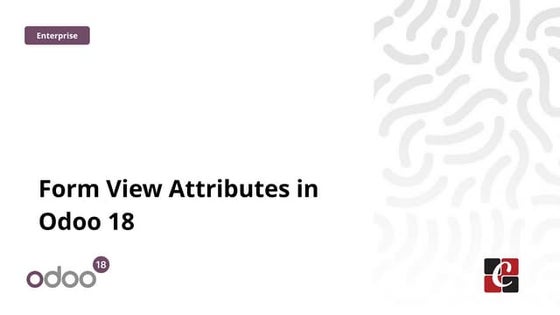



Form View Attributes in Odoo 18 - Odoo SlidesCeline George Odoo is a versatile and powerful open-source business management software, allows users to customize their interfaces for an enhanced user experience. A key element of this customization is the utilization of Form View attributes.
PHYSIOLOGY MCQS By DR. NASIR MUSTAFA (PHYSIOLOGY)



PHYSIOLOGY MCQS By DR. NASIR MUSTAFA (PHYSIOLOGY)Dr. Nasir Mustafa PHYSIOLOGY MCQS By DR. NASIR MUSTAFA (PHYSIOLOGY)
How to Manage Upselling in Odoo 18 Sales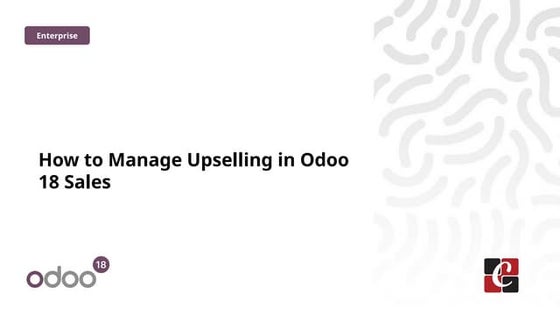



How to Manage Upselling in Odoo 18 SalesCeline George In this slide, we’ll discuss on how to manage upselling in Odoo 18 Sales module. Upselling in Odoo is a powerful sales technique that allows you to increase the average order value by suggesting additional or more premium products or services to your customers.
TERMINOLOGIES,GRIEF PROCESS AND LOSS AMD ITS TYPES .pptx



TERMINOLOGIES,GRIEF PROCESS AND LOSS AMD ITS TYPES .pptxPoojaSen20 GRIEF PROCESS,TERMINOLOGIES RELATED TO DEATH & DYING AND LOSS AND ITS TYPES
How to Configure Public Holidays & Mandatory Days in Odoo 18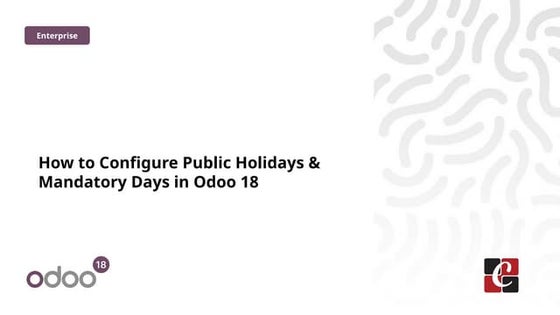



How to Configure Public Holidays & Mandatory Days in Odoo 18Celine George In this slide, we’ll explore the steps to set up and manage Public Holidays and Mandatory Days in Odoo 18 effectively. Managing Public Holidays and Mandatory Days is essential for maintaining an organized and compliant work schedule in any organization.
Rock Art As a Source of Ancient Indian History



Rock Art As a Source of Ancient Indian HistoryVirag Sontakke This Presentation is prepared for Graduate Students. A presentation that provides basic information about the topic. Students should seek further information from the recommended books and articles. This presentation is only for students and purely for academic purposes. I took/copied the pictures/maps included in the presentation are from the internet. The presenter is thankful to them and herewith courtesy is given to all. This presentation is only for academic purposes.
ANTI-VIRAL DRUGS unit 3 Pharmacology 3.pptx



ANTI-VIRAL DRUGS unit 3 Pharmacology 3.pptxMayuri Chavan ANTI-VIRAL DRUGS unit 3 Pharmacology 3.pptx
How to Create Kanban View in Odoo 18 - Odoo Slides



How to Create Kanban View in Odoo 18 - Odoo SlidesCeline George The Kanban view in Odoo is a visual interface that organizes records into cards across columns, representing different stages of a process. It is used to manage tasks, workflows, or any categorized data, allowing users to easily track progress by moving cards between stages.
U3 ANTITUBERCULAR DRUGS Pharmacology 3.pptx



U3 ANTITUBERCULAR DRUGS Pharmacology 3.pptxMayuri Chavan U3 ANTITUBERCULAR DRUGS Pharmacology 3.pptx
MCQ PHYSIOLOGY II (DR. NASIR MUSTAFA) MCQS)



MCQ PHYSIOLOGY II (DR. NASIR MUSTAFA) MCQS)Dr. Nasir Mustafa MCQ PHYSIOLOGY II (DR. NASIR MUSTAFA) MCQS)
How to Manage Amounts in Local Currency in Odoo 18 Purchase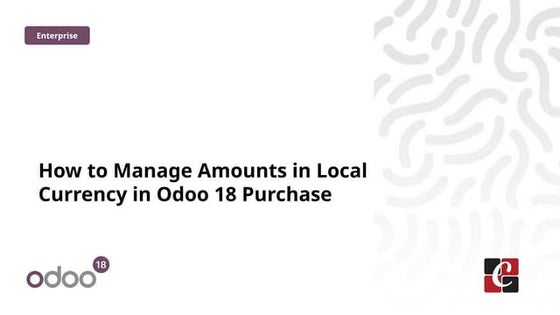



How to Manage Amounts in Local Currency in Odoo 18 PurchaseCeline George In this slide, we’ll discuss on how to manage amounts in local currency in Odoo 18 Purchase. Odoo 18 allows us to manage purchase orders and invoices in our local currency.
MEDICAL BIOLOGY MCQS BY. DR NASIR MUSTAFA



MEDICAL BIOLOGY MCQS BY. DR NASIR MUSTAFADr. Nasir Mustafa MEDICAL BIOLOGY MCQS
BY. DR NASIR MUSTAFA
BÀI TẬP BỔ TRỢ TIẾNG ANH 9 THEO ĐƠN VỊ BÀI HỌC - GLOBAL SUCCESS - CẢ NĂM (TỪ...



BÀI TẬP BỔ TRỢ TIẾNG ANH 9 THEO ĐƠN VỊ BÀI HỌC - GLOBAL SUCCESS - CẢ NĂM (TỪ...Nguyen Thanh Tu Collection https://app.box.com/s/yfwqwcillls0z4p34958pr8nj0b4udyr
Chemotherapy of Malignancy -Anticancer.pptx



Chemotherapy of Malignancy -Anticancer.pptxMayuri Chavan Chemotherapy of Malignancy -Anticancer.pptx
BÀI TẬP BỔ TRỢ TIẾNG ANH 9 THEO ĐƠN VỊ BÀI HỌC - GLOBAL SUCCESS - CẢ NĂM (TỪ...



BÀI TẬP BỔ TRỢ TIẾNG ANH 9 THEO ĐƠN VỊ BÀI HỌC - GLOBAL SUCCESS - CẢ NĂM (TỪ...Nguyen Thanh Tu Collection
Ad
Translations of real-verbal expressions into letters or symbols and vice versa.
- 1. PRACTICE TEACHING LESSON MATHEMATICS VI EXPLICIT TEACHING December 11 , 2017 (Control Group) OBJECTIVES CONTENT LEARNING RESOURCES PROCEDURE REMARKS REFLECTION A. CONTENT STANDARDS Demonstrates understanding of sequence in forming a rule, expression and equation. B. PERFORMANCE STANDARDS Apply knowledge of sequence, expressions and equations. C. LEARNING COMPETENCIES Gives translations of real-verbal expressions into letters or symbols and vice versa. PATTERNS AND ALGEBRA * Giving translations of real- verbal expressions into letters or symbols and vice versa. A. Referrences: 1. Teacher’s Guide pp. 21st Century Mathletes pp. 77-81 CG Math 6 LG Math 6 2. Learner’s Material pp. 21st century Mathletes pp. 200-209 3. Textbook pp. Math for life pp.233- 237 4. Additional Materials From Learning Resources (LR) Portal A. Reviewing previous lesson or presenting the newlesson: 1. Having a drill on giving terms or phrases that refer to addition, subtraction, multiplication and division. a) The teacher will show a flash cards to the students. In the flash cards there are written mathematical terms and they are going to answer if it denotes to addition, subtraction, multiplication and division. 2. Conducting a reviewon determining an equation and expression. Direction:determine if the given example is an equation or an expression. 1. 23-(5x4) 2. 36-6=15+15 3. 10+10=20 4. 55-8(2+) B. Establishing a purpose for a lesson: 1. Have a guessing game. The pupils must guess the riddle. In order to guess the riddle they must translate the word phrases to algebraic expressions and equations. The answer has a corresponding letter to fill in the boxes. A. Number of learners who earned 80% in the evaluation. B. No. of learners who require additional activities for remediation. C. Did the remedial lessons work? No. of learners who have caught up with the lessons. D. No. of learners who continue to have remediation. E. Which of my teaching strategies
- 2. 5. Other Learning Resources Indoor and outdoor real objects, pictures, videos, laptop, TV, Charts Riddle : I am an even number. I have fluffy and I have no end. 1. thirty diminished by ten (E – 30-10) 2. twelve plus thirty six (I – 12+36) 3. Four friends share a box of pens. Each receives 3 pens. Solve to find out the equation. (G – 4x3=12) 4. The product of three and two will result to six. (H- 3x2= 6) 5. The sum of twenty and five. (T – 20+5) C. Presenting the problem opener Sam’s family bought 5 tickets for P150 each and used 3 coupons for P100 each. Write an expression to this problem? (5 x 150) – (3 x 100) Five for 150 each = 5 x 150 Used = subtract or diminished 3 coupons for P100 each = (3 x 100) worked well? Why did this work? F. What difficulties did I encounter which my principal or supervisor can help me solve? G. What innovation or localized materials did I use to discover which I wish to share with other teachers? D. Discussing newconcepts and practicing new skills 1. Translating Word Phrases into Expressions. Symbol Key Words or Phrases + Addition, plus, the sum, more than, added to, increased by, the total of - Subtraction, minus, the difference of, less than, decreased by, diminished by, subtracted from, less x, (), Multiplication, times, the product of twice, multiplied by, of
- 3. ÷, , / Division, divided by, the quotient of, the ratio of = Is equal to, equals, is, is the same as, result is , yields Translate: 1. Four increased by two Ans: 2+4 Ask: Aside from increased what other terms can we used to represent addition? b. four increased by two is equal to six. Ans. 2+4=6 Ask: Who can rephrase the word phrase? 2. The product of twenty and four 20x4 Ask: Aside from increased what other terms can we used to represent multiplication? b. The product of twenty and four is eighty 20x4=80 Ask: Who can rephrase the word phrase? Examples: 1. Six more than four times eight Ans. (4x8)+6 2. The sum of a seven and five is twelve.
- 4. Ans. 7+5=12 3. Twice the sum of 8 and two is 20. Ans. 2(8+2) = 20. 2. Independent Practice Say: Translate the following to expressions and equation. 1. five times three decreased by 25 Ans. (5x3)-25 2. the quotient of twelve and three Ans. 12÷3 3. twenty decreased by nine is equal to eleven Ans. 20-9=11 E. Finding practical applications of concepts in daily living. Form three groups. Translate this expression into word phrase. (3 +2)-4 = 1 F. Generalization How can you translate real-verbal expressions into letters or symbols? G. Evaluating Learning I. Direction: Translate the following. 1. fifty less than two 2. twenty divided by four is equal to five. 3. a one hundred decreased by fifty is fifty.
- 5. Prepared and Demonstrated by:APRIL ROSE ANIN, Student Teacher Checked by: EMILYN D. ESCAMILLA – T – III Cooperating Teacher Translate to word phrase. 4. (3x2)+4=10 5. 8 – 4 H. Additional activities for application. Translate: A number decreased by 2 is equal to twenty two. What is the number?








